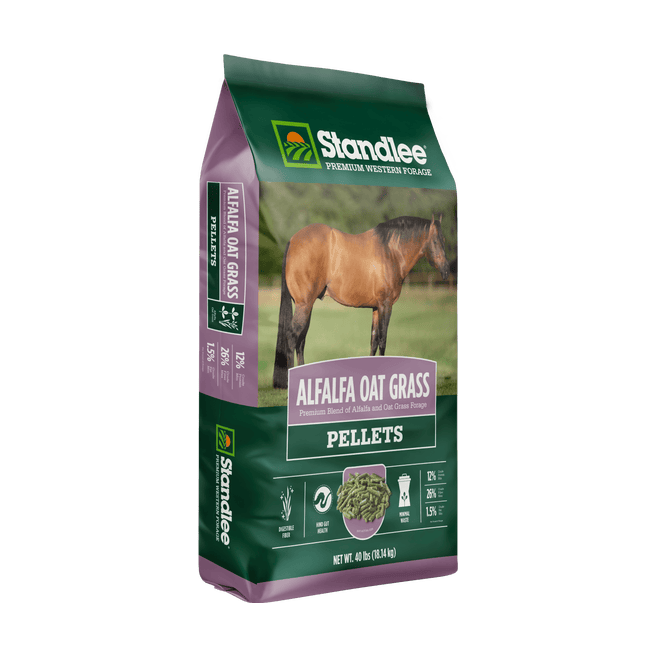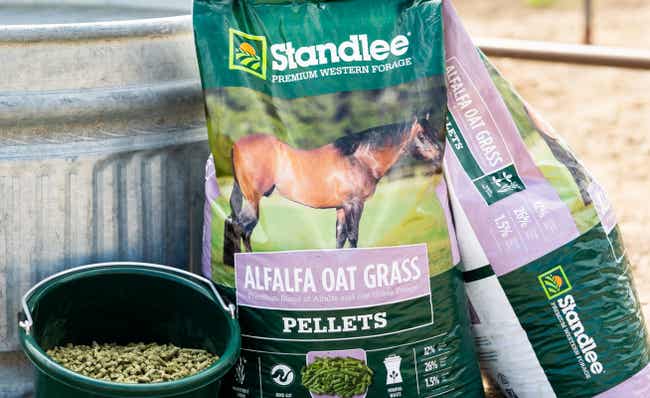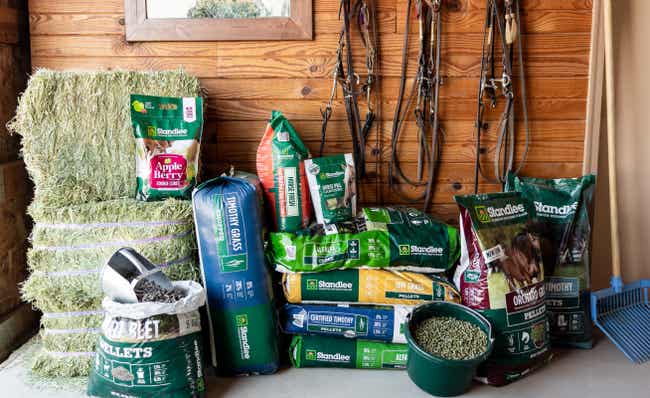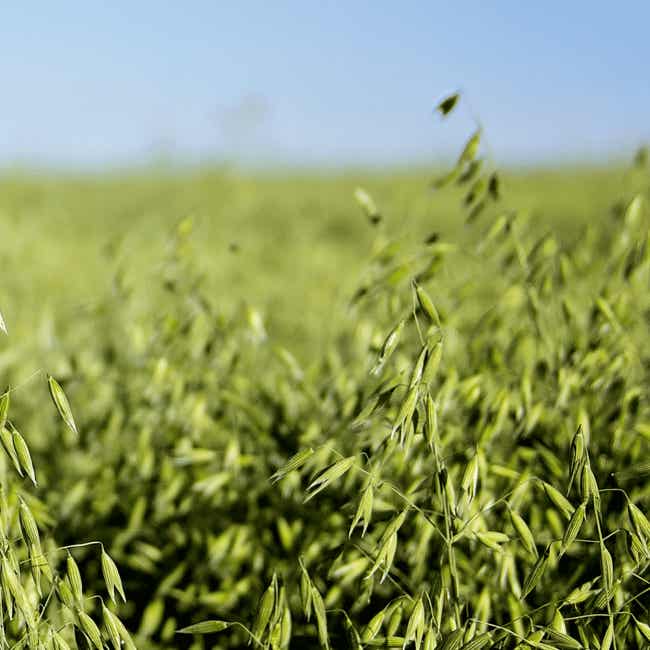


NET WT. 40 lbs (18.14 kg)
Standlee Premium Western Forage Alfalfa Oat Grass Pellets are made from high-quality sun-cured forage formed into ¼ inch hay pellets that are easy to measure and to feed. Alfalfa Oat Grass hay is moderate in protein, high in digestible fiber, and low in carbohydrates, making it a great option for carb-sensitive horses.
Find a store near you, or find other online vendors that carry Standlee where you can buy our products online.
FIND A LOCATIONStandlee Premium Western Forage Alfalfa Oat Grass Pellets are made from high-quality sun-cured forage formed into ¼ inch hay pellets that are easy to measure and to feed. Alfalfa Oat Grass hay is moderate in protein, high in digestible fiber, and low in carbohydrates, making it a great option for carb-sensitive horses.
Digestible Fiber
Minimal Waste
Hind Gut Health

Growing, underweight, performance and senior horses, horses with gastric ulcers, and pregnant or lactating mares.
Forage is the most important component of a horse's diet and should be fed at a rate of 1.5-2.5% of a horse's body weight. Gradually replace existing hay with Standlee over a seven to fourteen (7-14) day period.

For increased hydration, aggressive eaters, or horses with dental issues, cubes are recommended to be fed wet, soaked in water (2 parts water to 1 part pellets) for 30 min. or until properly softened. Standlee recommends that cubed forage is not the sole source of forage for horses since feeding some long-stem forage may help eliminate boredom and prevent stall vices.
If you have questions, contact the nutritionists at Standlee or consult your veterinarian.
NEVER FEED MOLDY OR INSECT INFESTED FORAGE TO ANIMALS.
| Animal | Max Feeding Rate |
|---|---|
| Cattle | Max 3% |
| Donkey | Max 1.5% |
| Goat | Max 4% |
| Llama | Max 2% |
| Nutrient | Amount | Min/Max/Ave | |||
|---|---|---|---|---|---|
| Dry Matter (%) | 92 | Ave | |||
| Crude Protein (%) | 12 | Min | |||
| Crude Fat (%) | 1.5 | Min | |||
| Crude Fiber (%) | 26 | Max | |||
| ADF (%) | 34 | Max | |||
| NDF (%) | 49 | Max | |||
| Starch (%) | 2 | Max | |||
| Dietary Sugar, ESC (%) | 7 | Max | |||
| Calcium (%) |
|
||||
| Phosphorus (%) |
|
||||
| Magnesium (%) |
|
||||
| Zinc (mg/kg) |
|
||||
| Manganese (mg/kg) |
|
||||
| Copper | 6 | mg/kg | |||
| Horse Digestible Energy (Ave) | .92 | Mcal/lb | |||
Sun-Cured Alfalfa (Ground), Sun-Cured Oat Grass (Ground)
Forage is a natural agriculture product. Despite the use of modern processing equipment, it is not always possible to remove all foreign materials. Sort and remove foreign materials before feeding.
To maintain product quality and ensure safety, store product in a covered, cool, and well-ventilated environment out of the effects of the weather.
DISCARD ANY SOILED OR WET FORAGE IMMEDIATELY.


Oats are a type of cereal crop grown for the seed/grain. Oat grains have been fed to livestock for centuries and have long been a sought-after source of energy for horses. Oats are high in starch and fiber, and while most horses consume and digest them easily, many horses don’t due to their high starch content. Oat plants grown as a cereal crop produce a seed/grain as they mature and energy stores (starch) from the plant are shifted to the grain as it ripens. This is then harvested, and the remaining plant is oat straw, which has very little nutritional value and is high in non-digestible fiber (Cuddeford et al., 1995). While oat grains can be detrimental to some horses, oat grass hay is an entirely different story.
Learn MoreFind out why our customers keep coming back!